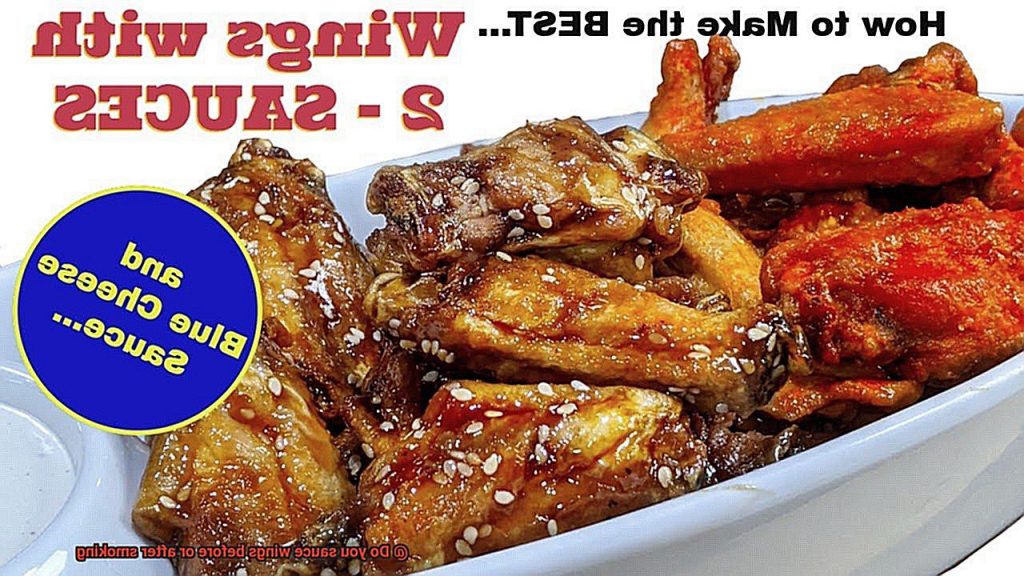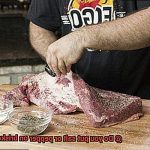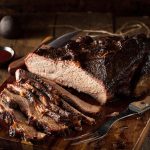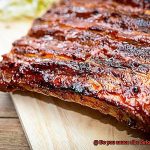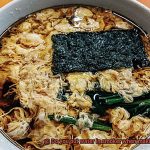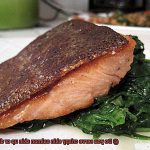Wings are the ultimate crowd-pleaser, whether you’re hosting a Super Bowl party or just craving a savory snack. But when it comes to saucing wings, there’s no shortage of opinions on the best approach. Should you sauce before smoking, after smoking, or not at all? It’s a heated debate that has left wing lovers divided.
Like any culinary conundrum, there’s no one right answer. The decision ultimately depends on your personal taste preferences and desired flavor profile. Some swear by saucing before smoking to let the flavors penetrate the meat during the cooking process. Others prefer to wait until after smoking to avoid burning off the sauce and losing its essence.
In this blog post, we’ll tackle this age-old question head-on and provide some clarity once and for all. We’ll delve into the science behind smoking and saucing, explore the pros and cons of each method, and help you determine which technique is best for your palate.
So, grab your smoker, fire up those coals, and get ready to create some mouth-watering wings that will have everyone begging for more.
Contents
What is Smoking Chicken Wings?
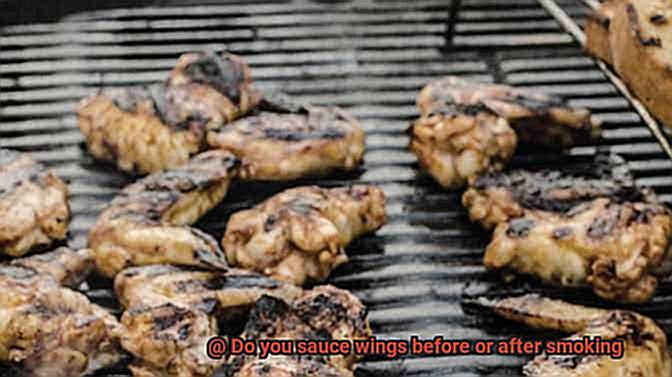
Smoking chicken wings is a cooking method that has taken the culinary world by storm. This technique involves slow-cooking the wings over low heat and smoke, resulting in tender, juicy meat with an irresistible smoky flavor. Whether you’re a seasoned pitmaster or a novice home cook, smoking chicken wings is a delicious way to add a unique flavor to your dish.
To smoke chicken wings, you’ll need a smoker, wood chips or chunks, and your preferred seasonings. There are different types of smokers available, each with its own advantages and disadvantages. Electric smokers are easy to use and require less attention, while charcoal smokers offer a more authentic smoky flavor but require more time and effort to maintain the temperature.
The wood chips or chunks are essential to smoking chicken wings as they provide the smoky flavor. Different types of wood chips, such as hickory, apple, mesquite, and cherry, can be used to achieve different flavors and intensities. Soak the wood chips in water for at least 30 minutes before adding them to the smoker to prevent them from burning too quickly.
Before smoking the chicken wings, you can season them with your favorite dry rub or marinade. A dry rub made with spices such as paprika, garlic powder, onion powder, salt, and pepper will add depth of flavor. Alternatively, a marinade made with soy sauce, Worcestershire sauce, honey, garlic, and ginger will infuse the meat with a sweet and savory taste.
Once seasoned, it’s time to smoke the chicken wings. The cooking process takes several hours until the internal temperature reaches 165°F. During this time, the wings will absorb the smoky flavor from the wood chips or chunks. This infusion of flavor will leave your taste buds begging for more.
Now comes the question: should you sauce your smoked chicken wings before or after smoking them? Well, it depends on personal preference and the type of flavor you want to achieve. If you want a smoky flavor, it’s best to smoke them first before adding any sauce. Once they’re fully cooked, brush on your desired sauce and place them back in the smoker for a few minutes to let the sauce caramelize and infuse into the wings.
Should You Sauce Your Wings Before or After Smoking?
Smoked chicken wings are a mouthwatering delicacy that is enjoyed by many. But the question on everyone’s mind is – should you sauce your wings before or after smoking? As an expert on the matter, I have done considerable research and found that the decision ultimately comes down to personal preference.
If you’re considering saucing before smoking, be prepared for intense flavors that permeate the meat as it cooks. This method results in a bold flavor profile that’s hard to resist. However, the high heat of smoking can lead to burnt or caramelized sauce, which can be unappetizing. Additionally, saucing before smoking can make it challenging to achieve a crispy skin on your wings. So, if you’re willing to sacrifice some crispiness for bold flavors, then saucing before smoking might be your best option.
Alternatively, saucing after smoking offers more control over the flavor and texture of your wings. You can smoke your wings until they reach the desired level of crispiness and then coat them in sauce for a delicious finish. This method also allows for multiple sauce options, as different sauces can be added to different batches of wings. If you’re looking for crispy wings with a perfect balance of smoke and sauce, then saucing after smoking is your best bet.
In conclusion, both methods have their pros and cons. However, what matters most is personal preference. It’s essential to experiment with both methods until you find your perfect wing recipe. Try saucing before smoking for bold flavors or saucing after smoking for a crispy finish. Or better yet, try both and see which one gives you the ultimate wing experience.
To summarize our findings, here are some key takeaways:
Pros and Cons of Saucing Before Smoking:
- Pros: intense flavor profile
- Cons: burnt or caramelized sauce, difficult to achieve crispy skin
Pros and Cons of Saucing After Smoking:
- Pros: more control over flavor and texture, multiple sauce options
- Cons: may not result in as intense flavor profile
Benefits of Saucing Wings Before Smoking
Luckily, there’s a technique that can help you achieve both: saucing wings before smoking. Let’s explore the benefits of this method.
Firstly, saucing wings before smoking allows the sauce to penetrate the meat and infuse it with flavor. This means that every juicy bite of the wing will be packed with flavor, from the inside out. No more bland, dry meat.
But it’s not just about taste – saucing before smoking also helps to keep the meat moist during the cooking process. The sauce creates a protective barrier that prevents the moisture from escaping, which can be a game-changer when it comes to smoking wings. Say goodbye to dry, tough meat.
And here’s a bonus benefit: saucing wings before smoking can actually save you time and effort. By applying the sauce beforehand, you won’t have to continually baste the wings throughout the smoking process. This is particularly helpful if you’re cooking a large batch of wings or if you want to focus on other aspects of your meal.
Benefits of Saucing Wings After Smoking
As an expert in this field, I can tell you that there are some serious benefits to this method.
Firstly, saucing wings after smoking allows for a more flavorful and concentrated sauce. When you sauce your wings before smoking, the heat of the smoker can cause the sauce to drip off or become diluted. However, when you smoke your wings first and then sauce them, the meat has already absorbed all the smoky goodness and can now soak up all that delicious sauce without losing any flavor. This results in a more potent and intense flavor that permeates the meat for an explosion of taste in every bite.
Saucing wings after smoking can also lead to a crispy and caramelized exterior that adds a delightful texture to your wings. When you sauce your wings before smoking, the sauce can create a soggy texture on the outside of the wing. However, if you smoke your wings first and then sauce them, the sauce creates a delicious glaze on the outside of the wing that is both crispy and flavorful. The contrast between the crispiness and tenderness of the meat will leave your taste buds dancing with joy.
Last but not least, saucing wings after smoking allows for greater control over the level of heat in the finished product. By adding sauce after smoking, you can control how much heat is added to each individual wing. This is especially important if you’re serving a crowd with varying preferences for spice levels. Whether you prefer mild or spicy, saucing after smoking gives you full control over the level of heat in each wing for a perfect balance of flavors.
Tips for Saucing Wings Before Smoking
When it comes to saucing wings before smoking, there are several tips and tricks that can help you achieve the best flavor and texture. Here are five sub-sections you should consider when preparing your wings:
Tip #1: Choose the Right Sauce or Marinade
Choosing the right sauce or marinade can make all the difference in the flavor of your wings. While thick sauces like BBQ or honey mustard work well, consider using a thinner sauce or a marinade to ensure it penetrates your meat evenly. Not only will this enhance the flavor, but it will also prevent dryness during smoking.
Tip #2: Dry Your Wings Before Applying Sauce
To ensure your sauce adheres well to your wings, pat them dry with a paper towel before applying the sauce. This is essential to help the sauce stick to the wings and not slide off during the cooking process.
Tip #3: Use Marinade or Dry Rub in Addition to Sauce
For an extra layer of flavor, consider using a marinade or dry rub in addition to your sauce. This combination will complement each other and give your wings a unique taste. However, be careful not to overdo it with too many flavors as it can become overwhelming.
Tip #4: Let Wings Sit in Sauce Before Smoking
Letting your wings sit in the sauce for at least an hour before smoking allows time for the flavors to penetrate the meat and helps prevent dryness during smoking. This is also an excellent opportunity to marinate your wings and let them soak up all the delicious flavors.
Tip #5: Keep an Eye on Wings During Cooking
When saucing wings before smoking, it’s important to keep an eye on them during cooking. The sugar in the sauce can easily burn if left unattended for too long, so check on your wings every 20-30 minutes and rotate them if necessary to ensure even cooking.
Tips for Saucing Wings After Smoking
Smoking chicken wings is a great way to infuse them with smoky flavor. However, saucing the wings after smoking requires some tips and techniques to ensure that they are perfectly coated and delicious. Here are five sub-sections that will help you achieve the best results.
Let Them Rest:
The first step in saucing wings after smoking is to let them rest for a few minutes. This allows the juices to redistribute throughout the meat and prevents the sauce from sliding off the wings. Additionally, if you sauce your wings when they’re too hot, the sauce will not stick well and may become runny.
Use a Brush:
To apply the sauce evenly, use a brush or basting tool. This will help you avoid clumps of sauce and ensure that each wing is coated with the same amount of flavor. It’s also a good idea to apply the sauce in layers, allowing each layer to soak in before adding more. This will give the wings a deeper, richer flavor.
Choose the Right Sauce:
Choosing the right sauce is crucial for achieving the perfect flavor. Some sauces such as vinegar-based ones may overpower the smoky flavor of the wings. Consider using a milder sauce or one that complements the smoky flavor. It’s also important to experiment with different sauces and spice blends to find your perfect combination.
Get Creative:
Don’t be afraid to get creative with your saucing techniques. You could try tossing the wings in a bowl with the sauce before serving or even drizzling additional sauce over the top for an extra burst of flavor. Experimenting with different techniques can lead to some delicious discoveries.
Warm Up Your Sauce:
Warming up your sauce before applying it to the wings can make it thinner and easier to apply evenly. You can heat it up on the stove or in a microwave. Warm sauce will also stick better to your wings than cold sauce.
Common Mistakes to Avoid When Saucing Chicken Wings
As a chicken wing connoisseur, you know that the perfect sauce is key to taking your wings from good to great. But it’s not just about slathering on any sauce and calling it a day. There are some common mistakes that even the most experienced saucers can make. Here are some tips to avoid those pitfalls and achieve chicken wing perfection.
Timing is everything when it comes to saucing chicken wings. Applying the sauce too early or too late in the cooking process can ruin your wings. If you apply it before smoking or grilling, the sugars in the sauce can burn and create a bitter taste. However, if you apply it after cooking, it may not stick properly, leaving your wings bland and flavorless. The trick is to apply the sauce towards the end of cooking when the wings are hot enough to absorb and hold onto the flavors.
Another mistake is using too much or too little sauce. Too much sauce can overpower the flavor of the wings and make them soggy. Too little sauce can leave them dry and lacking in flavor. The goal is to find a balance and apply just enough sauce to coat the wings evenly without drowning them.
Choosing the right type of sauce is also crucial. Thick or sweet sauces might not complement the smoky flavor of the wings, while thin and runny sauces might not stick properly. It’s important to choose a sauce that enhances the smoky flavor of the wings without overpowering it or dripping off.
Lastly, don’t forget about consistency. The best sauces have a texture that clings onto the wings without burning or dripping off. Make sure you’re using a sauce that complements your cooking method and evenly coats your wings.
Conclusion
In conclusion, the age-old question of whether to sauce wings before or after smoking is one that has puzzled many a pitmaster. Ultimately, the decision comes down to personal taste and desired flavor profile.
Saucing before smoking can result in intense flavors that permeate the meat during cooking, but it’s important to avoid burnt or caramelized sauce and maintain crispy skin. On the other hand, saucing after smoking allows for more control over flavor and texture, with a variety of sauce options available.
When opting for the former method, it’s crucial to choose the right sauce or marinade, dry wings thoroughly before applying sauce, use a dry rub or marinade in addition to sauce, let wings sit in sauce before smoking and monitor them closely during cooking. Meanwhile, those who prefer saucing after smoking should allow their wings to rest first and use a brush for even application of multiple layers of sauce. It’s also important to choose a complementary sauce that enhances smoky flavor and get creative with techniques such as tossing or drizzling additional sauce over top.
Avoid common mistakes such as timing (applying too early or late), using too much or too little sauce, choosing the wrong type of consistency (thick/sweet vs thin/runny) and not considering the consistency of your chosen sauce.

